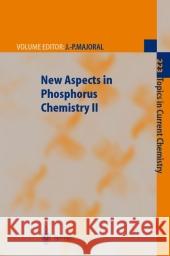New Aspects in Phosphorus Chemistry II » książka
New Aspects in Phosphorus Chemistry II
ISBN-13: 9783642079009 / Angielski / Miękka / 2010 / 263 str.
Strong non-ionic bases are highly advantageous as stoichiometric reagents and as catalysts in synthetic organic chemistry owing to side reactions that f- quently occur when ionic bases such as LDA or alkali metal alkoxides are employed. A second reason that non-ionic bases are frequently more useful in these applications is that such bases are often more soluble in less polar organic solvents, particularly at low temperatures. Thirdly, non-ionic bases can provide reactive naked or tightly associated deprotonated substrate anions that are s- bilized by the relatively large, poorly solvated cations formed by the protonated base. In such cations, extensive positive charge delocalization can occur. Prior to our work on pro-azaphosphatranes of type 1 (Scheme 1), the very strong n- ionic bases utilized for organic transformations were largely confined to the nitrogenous bases shown below (Scheme 2). Scheme 1 Scheme 2 4 J. G. Verkade 2 Uses of Strong Nonionic Nitrogen Bases 2. 1 Amines One of the earliest strong non-ionic bases to make its appearance was Proton Sponge and its derivatives 1] and these systems have been reviewed 2]. More recently Proton Sponge has been used in the palladium-catalyzed arylation of 2,3-dihydrofuran 3], and it also catalyzes Knoevenagel condensations of s- strates possessing activated methylene groups 4]. Recently the synthesis of the macrocyclic tetramine below (Scheme 3) was reported 5]. The encrypted nitrogens are very basic (pK











